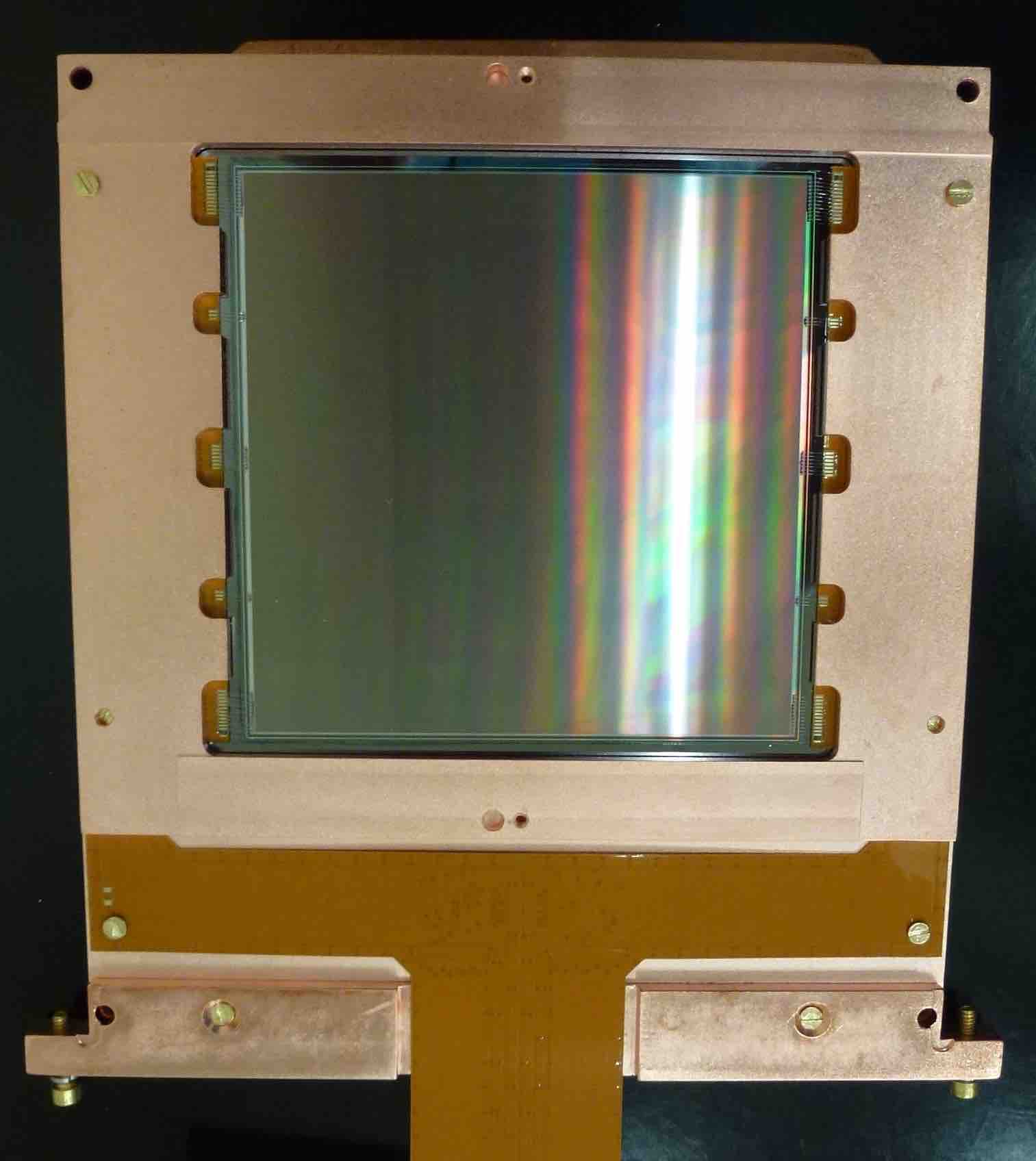DAMIC: Dark Matter in CCDs
The DAMIC experiment at SNOLAB employs the bulk silicon of scientific-grade charge-coupled devices (CCDs) as a target for interactions of particle dark matter from the galactic halo. By virtue of the low readout noise of the CCDs, DAMIC is particularly sensitive to the small ionization signals (only a few ionized carriers or e-) from recoiling nuclei or electrons following the scattering of low-mass dark matter particles.
The large-area mm-thick active volume of the CCDs is sensitive to ionizing radiation: both the dark matter signal and backgrounds from natural radioactivity. To mitigate backgrounds, the devices are deployed in a radio-pure tower deep underground, heavily shielded from environmental radiation.
The CCD images contain a two-dimensional projection on the x-y plane of all the ionization that occurs in the active volume of the device. The characteristics of the pixel clusters readily identify the nature of the ionizing particles, which provides important information on their origin. For low energy events (i.e., dark matter candidate events), the track length of the ionizing particle is much smaller than the pixel size and the shape of the cluster is determined by how much the charge diffuses as it is drifted along the z direction to the pixel array. Thus, from the measurement of the charge diffusion, it is possible to obtain the z coordinate and, hence, reconstruct in 3-D the location of a particle interaction in the active volume.
DAMIC at SNOLAB
Since February 2017, we have been operating a seven-CCD array (target mass of 40 g) in the J-Drift of the SNOLAB underground laboratory. The CCDs are operating with optimal performance of 1.6 e- RMS pixel noise and a radioactive background at low energies of 5 events/keV/kg/day.
Throughout 2013–2016, we carried out an active R&D program at SNOLAB that demonstrated the potential of DAMIC's experimental technique:
- We performed radioactive background studies that demonstrated the high radio-purity of the CCDs. In particular, we measured for the first time the 32Si decay rate in detector-grade silicon by relying on the spatial correlation between the decay of 32Si and its daughter 32P. This capability also allows DAMIC to veto this dangerous background. Because of the relatively long half-life of 32P (14 days), this technique is only viable thanks to the CCD's high spatial resolution.
- We calibrated the nuclear recoil energy scale with a CCD and a low-energy photoneutron source down to our current energy threshold. Thus, DAMIC is the low-mass WIMP search with the most complete understanding of the response of the detector to the potential WIMP signal.
- We performed a low-mass WIMP search with 0.6 kg-day of data to demonstrate the stable, low-noise and low-background operation of a CCD array in a deep underground laboratory.
- We performed a search for hidden-photon dark matter with particle masses as small as 1.2 eV. This result demonstrated DAMIC's sensitivity to energy depositions as small as the band gap of silicon from dark matter interactions.
DAMIC-M
The next step in the DAMIC program is a 50-CCD detector array of 1 kg target mass. It capitalizes on the DAMIC experience at SNOLAB and, at the same time, takes a giant leap forward in sensitivity by radically innovating the detector technology. Its 36 Mpixel CCDs will be the most massive ever built, 20 g each. The implementation of a novel "skipper" readout will result in the high-resolution detection of a single charge carrier (e-). Together with the remarkably low leakage current of <10-21 A/cm2 — a combination unmatched by any other dark matter experiment — DAMIC-M will feature a threshold of 2 or 3 e-.
DAMIC-M will search for low-mass dark matter in a broad range of masses from 1 eV to 10 GeV. In addition to progress in the search for GeV-scale WIMP dark matter and hidden-photon dark matter, DAMIC-M will break new ground in the search for dark matter with masses 1 MeV to 1 GeV by improving by orders of magnitude the sensitivivity to the ionization signals from the scattering of dark matter particles with valence electrons (e.g., Figure 2 in this paper). The science reach of DAMIC-M was compiled, together with the prospects for other direct detection experiments, in Section IV of this community report.



